Note: Searching for this car: 1952 Crosley with Almquist body. VIN: CD 402576
Contact: Chuck Klein, cklein@chuckkleinauthor.com
HOT RODDING
The Glory Years
© 2008 Chuck Klein
(Published: 12 June 2008, Old Cars Weekly News)
Cresting the hill, almost side by side and at a little over a hundred, the powerful Marchal headlamps illuminated the reflective decals on the side of a city police car waiting for the light at Langdon Road. I could see by the condition of the walk-wait signal that the light was about to change to red for our north bound cars. It was too late now. At about seventy we went through the red light together, Howard in his 270+ Chevy and me in my hopped-up Vette. The cop didn't waste anytime in turning on his "bubble gum machine" and pulling around the line of cars waiting with him. Howard stopped in front of the high school, but I kept right on going, while flipping the switches I had installed to turn my tail and brake lights out.
HISTORICAL BACKGROUND
Hot Rod: Performance enhancing a factory vehicle to increase its horsepower, acceleration and speed.
Though hot rodding began in the 1930s the effects of the Great Depression and World War II greatly suppressed its numbers. The glory years really didn't get started until the 1950s and carryied on into the early sixties. Hot rodding, especially street racing, became more prevalent due to an improved economy that had hindered the cash-strapped/gasoline-rationed past generation. Sans sanctioned drag strips, racing on the streets and highways were the only option for this new generation of pioneer hot rodders.
In addition, lagging police technology fueled this open road mentality that made "getting caught" a remote probability. More powerful Detroit-built cars were often the result of hot rodder innovations such as multiple carburetors, hi-performance cams and machining techniques that pushed the limits of factory production. Most of these mechanical changes were discovered by trial and error, but when they worked the "Big Three" (Ford, Chrysler, GM) took notice. Many of these "trials" really improved performances. "Errors" occurred when, say for example, one hot rodder learned that someone had successfully shaved .100 in. off his flywheel to which this hot rodder would think: if .100 in. is good for more speed, then .125 in. would be better. Sometimes these innovations worked and sometimes they caused the modified part to come apart at high speed. Additionally, hopping-up an engine put increased strains on other parts of the car - strains not envisioned or engineered for by the factory.
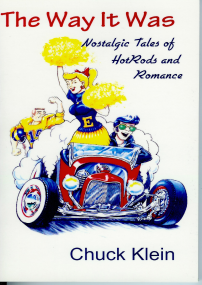 One very enthusiastic rodder installed a full race Mercury Flathead engine into his, otherwise stock 1949 Ford. This engine included porting & polishing, oversize bored block, a new crankshaft to increase the stroke, a racing camshaft, six Stromberg 97 carburetors, hi-compression heads and a few other goodies. He had a lot of added horsepower, but he never made it to the end of the quarter-mile drag strip. Every time he ran some stock part, such as a universal joint, rear axle, clutch or transmission, would break.
One very enthusiastic rodder installed a full race Mercury Flathead engine into his, otherwise stock 1949 Ford. This engine included porting & polishing, oversize bored block, a new crankshaft to increase the stroke, a racing camshaft, six Stromberg 97 carburetors, hi-compression heads and a few other goodies. He had a lot of added horsepower, but he never made it to the end of the quarter-mile drag strip. Every time he ran some stock part, such as a universal joint, rear axle, clutch or transmission, would break.
The "Big Three," sometimes learning from the hot rodders innovations, began offering factory options such as hot cams, multi-carb set-ups and engineered drive trains to handle this increase in engine power. By the mid-sixties hot-rodding, as the innovators had lived it, was passe'. No longer was it possible to win a race just because you could hop-up or do a better tune-up than the other guy. The advent of the "muscle car" era marked the beginning of the who-ever-has-the-most-money wins the race. Sanctioned, produced and funded factory vehicles made drag racing an expensive and technologically intense venture.
Drag racing, at first, was a hobby whereas the hot rodder needed his rod for everyday transportation and thus couldn't have a "full-race" engine or a show-quality finish. Fact was these modified and customized vehicles were usually never completely finished. Most exhibited primer paint and lacked upgraded interiors and spit-shined/chrome-plated engines - in direct contrast to hot rods of today. This was mostly due, not so much because the rodder didn't have the time or money to complete the car, but usually as a result of taking on a new responsibility…such as marriage and all that comes with it. Sure, Hot Rod Magazine displayed a finished rod on its cover every month, but those were more of the exception than the rule.
In the Glory Years, drag strips were little in number and fought against by local politicians. However, once city fathers were convinced that hot rod clubs, serious about legal racing, would punish club members who were caught racing on the streets drag strips became more prevalent. In most communities, hot rod clubs would ban together to form an association and then seek a sympathetic police officer to help convince the political powers to authorize the building of a drag strip.
LINK TO 8mm Film of Beechmont Dragway, Sunday, 14 Jul 1958. www.youtube.com/watch
REGIONAL MEET. I am sure of the date as the Trophy Girl was my girl friend at the time.
I ran E/SP with my Crosley and took home the trophy.
By the mid-sixties, the other factor, police technology, also contributed to fewer street races. At the same time that political subdivisions were considering allowing sanctioned drag strips, they were also equipping their police departments with "interceptor" scout cars. These interceptors were mostly just unmarked, V8 powered sedans with heavy duty brakes and dash or grill mounted red-lights. Radio communication and radar improvements also put a serious damper on those who did their racing on the street.
By the 1980s many former hot-rodders were settled in their careers, had a spare garage bay and began building modern street rods, drag-racing-only vehicles and show-only customs. Though these "finished" cars are what the owner had dreamed of in his early years, it wasn't the same. Then, as today, most all innovations had been discovered and with a spare garage and money one can buy most any part or pay someone to make his wish come true.
NOT INCLUDED IN PUBLISHED VERSION
Some of the Vehicles Owned by members of the Knights of the 20th Century Hot Rod Club, Circa 1957. (These unrestored, used cars in most cases were daily drivers and in various stages of completion. With maybe only one exception, none were ever "completed".
Studebaker powered '36 Ford;
Cadillac powered '54 Studebaker (Stude-a-lac);
Cadillac powered '50 Mercury (Merc-a-lac)
Full race '52 Olds (the one who's flywheel disintegrated because he removed too much metal);
Flat-head Mercury powered '49 Ford (the one that never made it to the end of the drag strip);
V8 Chev powered '39 Ford;
Chrysler powered '57 Chev;
Chrysler powered '40 Ford;
Olds powered '40 Ford Pick-up
Partly customized '53 Plymouth;
Unfinished, radically customized '56 Chev;
H-modified, Fiberglas bodied, sports car;
One "B" Dragster and a number of 55-57 Chevies and Fords.
***************************************************************************************************************************************************************************
Note: Searching for this car: 1952 Crosley with Almquist body. VIN: CD 402576
Contact: Chuck Klein, cklein@chuckkleinauthor.com
PERSONAL EXPERIENCES:
Crosley Escapades
Chuck Klein
In the early portion of '57 I truly awoke. Rock & roll music was in full control, girls were suddenly of interest, and for my fifteenth birthday, my father bought me a car!
The car, a l952 Crosley two door sedan with its tiny four cylinder engine that barely ran, was a real dream to me. The dream being to convert this slow, top heavy, unattractive little old lady's car into a screaming, low slung sports car. To accomplish this would require replacing the metal body with a new, racing style fiberglass shell and hopping up the engine or maybe stuffing a V8-60 between the rails.
The magazine advertisements for the plastic body declared the average installation time should be fourteen hours. They lied. My father must have known this because what could a fifteen-year-old, sans license, do with a real sports car? Of course, not having a license didn't stop me from putting a few "test" miles on the stocker during post midnight joy rides when all were asleep. Once actual construction began, the car would be totally undriveable except in the various stages when tests were "required".
By late spring, I had the body off and faced the grinding task of cleaning the remains. The drudgery of this work was mind numbing and the dirt and filth was so heavy that I had to spend a good portion of each day just cleaning the garage. The garage was surrounded by shade trees and the area remained quite cool in the summer as the house was not air-conditioned. On one outside wall, under the wood double hung windows, was the heart of the workshop; a large work bench, some eight feet long. We made this bench from wood my brother, Willie, and I had swiped from some of the new houses under construction in the area. This creation was made of plywood and two-by-fours and held together with nails, since by that stage of life we hadn't discovered threaded fasteners. It was sturdy enough with a full length shelf under and eye-ball level to a floor.
When the fiberglass body arrived from Almquist a quick check of the dimensions showed that there was no way it would fit and look right. There were no instructions, just a shell, two curved pieces that had to be fitted and a made into doors, and a copy of the invoice showing that the amount of $295.00 had been paid. For the finished car to look right and handle correctly, the frame would have to be "Z'd" and "C'd" and the engine would have to be moved back and down, alterations I had only read about in hot rod magazines. A quick check of the body to frame/engine alignment made it clear the engine would not be in the center of the hood opening and the car would have a very high center of gravity if mounted to the stock frame. Definitely not the low slung sports car I imagined it should resemble.
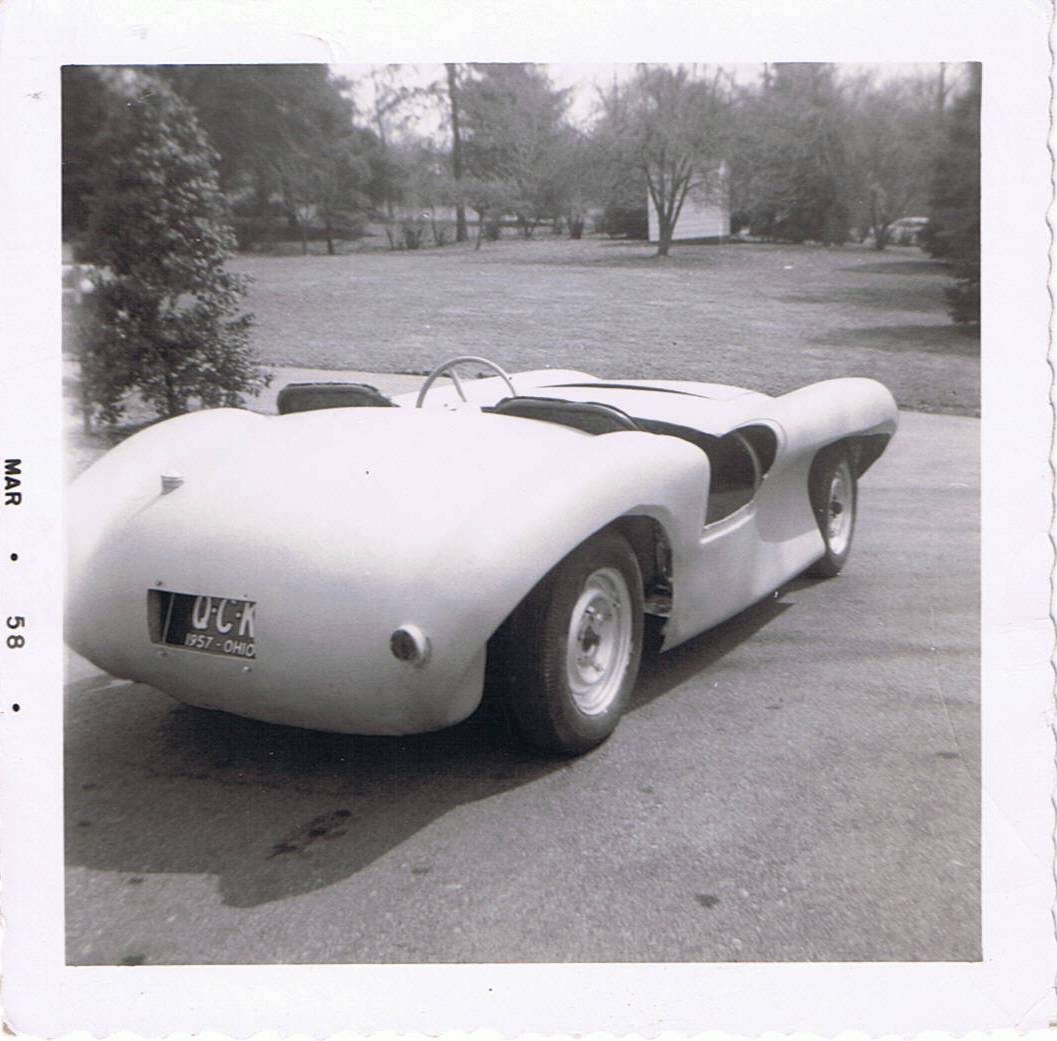
Crosley with Almquist body mounted - sans doors which were glassed over (non-working as the car was so low, you could just step over the side).
From a man named Crifield, who raced Crosley’s on indoor tracks I was able to purchase a high lift Harmon Collins cam, and other invaluable speed equipment.
The end of fall found the frame and engine ready for a road test. All that was required for this test was weather conditions of least thirty-plus degrees and dry. Not normal for this time of year, but I had faith that the Gods of high speed would smile on me. Sure enough, I got the bright sun-shiny day only it happened to arrive on a school day. All I could think about the entire morning was the test drive, and by sixth bell, I could resist no longer. I cut Biology and quickly thumbed home.
Exchanging my school outfit for the warmest clothes I could find, I headed for the garage and a date with excitement and apprehension. Without wasting any precious fair weather, I fired up the now souped-up engine which had, in addition to the speed equipment I had gotten from old man Crifield, a fifty thousand volt coil and dual point distributor. I listened to the idling four-banger, which was music to my ears, trying to familiarize myself with its every sound for reference after the test run. I had to rig a piece of bailing wire to the throttle linkage on the carburetor because there was no floor board to affix a gas pedal to. I sat on a piece of plywood - poised my left foot on the clutch and my right foot as near to the brake pedal as possible and eased the bomb down the driveway.
My plan was to drive to the area of streets across main road that ran through our small village. On the way over I rolled the car from one side of the road to the other, all the while watching the frame for any signs of stress. The quick steering was perfect, a result of the lengthened pitman arm. It took less than one full turn for lock to lock. At the entrance to my "test track", I doubled clutched into first gear, listened to the engine, took one more look at the frame welds, and grabbed the makeshift throttle. The instant I yanked on the wire the tires spun, and the bodiless car rocketed forward almost causing me to lose my grip on the steering wheel. The force of this sudden acceleration was so great I couldn't lift my foot to depress the clutch, and by the time I had let go of the throttle cable, the car was half on the grass shoulder of the road. Holy cow, I could get really hurt, I thought, as I lined up for another try.
Calming myself, I gripped the wheel with renewed strength and felt a rush of adrenalin as I dumped the clutch while tugging at the cable. This time I held the little beast in a straight line. I reached about fifty in second gear and noticed the main frame section was bowing out, but the front end was very stable and I pushed on, taking the first turn on rails. It hugged the road like paint. Now I was sailing down the short, flat straight to the second turn where I applied full power half way through and promptly spun out, narrowly missing a tree. This was like, crazy man! I loved it!
On the back straight, now in third and at a higher speed, I could clearly see the frame bowing out. Time to take it home, one run was enough for now. Once inside the garage, I could hardly push the clutch in because I was shaking so much.
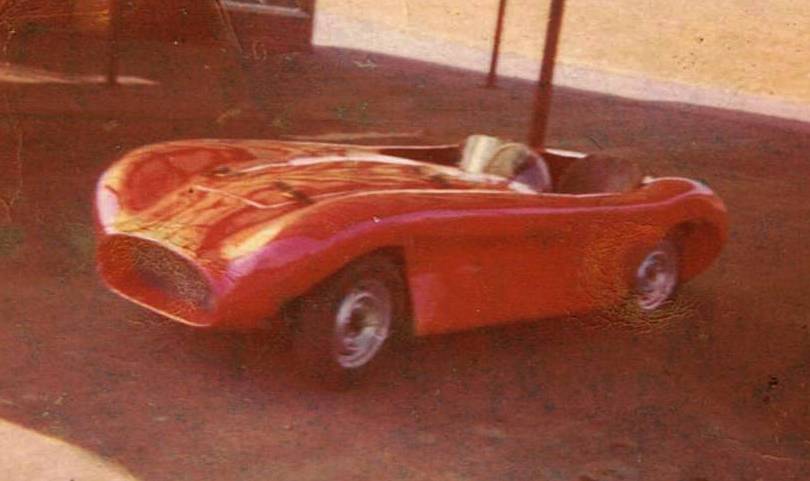
The finished Almquist bodied H-Modified Sports Car, March 1958
In late January, using large pieces of corrugate board from my father’s factory, I made a floor board template. A local sheet metal shop then fabricated the floor board. With the help of a few buddies, the body was placed on the now completed chassis. I used fiberglass cloth over wire mesh to make “L” brackets which were then bolted to the floor board/frame and glassed to the body.
The first day of spring came and went without any fanfare. I was sixteen, and my car was done except for the paint. I decided to take one final shakedown run before painting in case any major changes were required. Friday after school, weather permitting, would be the first day for a test with the body on, license or no license. After a brief warm up and a check of the recently installed S-W gauges, I headed for my test track. Now, with a seat to hold me and an accelerator pedal I could really see how it would handle. This time when I dumped the clutch, I easily kept control as the little bomb shot down the straight-a-way. At turn number one I doubled-clutched down into second and pushed the car through on rails not ready to try a full drift. Turn two was the same though I took up the entire width of the road. Accelerating into the back straight, the muffler less exhaust produced an ear splitting pitch as the little four banger turned upwards of eight-thousand RPM.
The thought of disturbing any of the people living on this normally quiet street never occurred to me, at least not on the first trip around. The only negative observation I had was that the engine seemed to flatten out well before it should. Maybe the stock carb was not enough for the hot cam. At the end of the first run, I was enjoying it so much that I decided to go again, this time trying for a little more speed in the corners.
Heading into turn one, I tried what I had only read about; the four-wheel drift. Just before the apex and at about thirty miles per hour I jerked the wheel hard left which, as it should, started the front end sliding. At this attitude, if I did nothing else the car would plow off the road. If I backed off the gas, I would spin out. However, I forced myself to do what I had read about; I opened the throttle full sending the little sports car into an actual four wheel drift - if only for a second. I over-corrected and did a complete one-eighty right in the middle of the street. It was exhilarating. Here I was doing what I had only dreamed about doing and doing it with a car I had made. I got straightened out and headed for turn two where I was determined to master the drift.
This time I got it right. However, unknown to me old lady Fritz, who lived just past turn two, had had time to get her broom ready when she heard me start my second trip around. Now here I was, coming out of a controlled slide with no place to go other than into a tree or right past the edge of her drive where she stood, broom in hand. She was either crazy or had more faith in my driving than I had because the line I was taking was going to put me within inches of where she stood. She didn't budge and as I got within swinging distance, she gave a round house swipe at me, knocking the tiny, single Plexiglas windscreen loose from its retaining bolts. I ducked and didn't get hit, but I could hear her screaming something as I slammed into third gear. Enough! Get me back to the garage.
I hadn't been home long enough for the engine to cool down when the police pulled up. I approached the open window of the scout car just as Officer Bloomfield was saying into the mic, "Twenty-one, two-seven the Klein residence."
"Two-seven, Twenty-one. Advise the subject if I catch him racing that thing, he's going straight to Juvenile," came the voice over the radio.
Uh oh, I was in big trouble now. I could just see my chance of ever getting a license fly right out the window.
"Chuck? It's Chuck, isn't it?" The uniformed cop asked.
"Yes sir."
"Maybe I better take a look at this thing you've been terrorizing the neighborhood with. Is that it?" He said, nodding toward the garage.
I stood over to one side as he walked around my pride and joy which was squeezed between parts boxes and the work bench--the one made from stolen lumber. Maybe they were still looking for the thief, I thought, sweat beginning to form on my forehead. He didn't say anything for the longest time, just peering into everything. Finally, the officer reached back to where his handcuffs were. I looked out the door at the woods. I could run and hide in one of the old tree houses, and when it got dark, I could thumb to Texas or someplace, anyplace. Thoughts of prison raced through my mind as he casually hitched his up his pants and said, "Did you build this yourself?"
"Yes sir," I replied with a voice that resonated with guilt.
"Pretty good. I wish I'd had been able to do something like this when I was younger. You've got quite a place here, with that work bench and all."
He did know! Now the axe is going to fall. If I made a break for it, he might shoot me. I had visions of my body lying spread eagle on the driveway. I wondered if the bullet in my back would hurt more than the falling on the blacktop. I suddenly had an over-powering urge to fess up, but my throat was all choked and I couldn't speak
"Can I take a look at the engine?" Officer Bloomfield asked, without commenting on my total silence. He reached for the leather straps that held the hood down while I hurried to assist, still unable to talk. Maybe the parts I got off old man Crifield were stolen, This is crazy. I've got to get hold of myself and start acting cool. I grabbed the straps on my side of the car and helped the officer lift the hood.
"Looks like you've done a lot of work on this, fellah," the cop commented, admiringly. Silence. "I'll tell you one thing, Chuck. You're pretty cool. There's no question that this engine has recently been run, I can feel the heat from here, and there's no doubt in my mind that this is the car Mrs. Fritz described as almost running her down. However, since I didn't see you driving it and you have had the presence of mind not to admit to anything, there's nothing I can do other than let you know that if we catch you, it'll be a citation at least. And if Sergeant Prince catches you, well, you heard him on the radio; he'll haul your sorry tail to Juvenile Hall. Is that clear, son?"
I couldn't believe my ears. "Yes, sir," I said, in as normal a voice as I could muster.
"I'm not going to give you a ticket or even tell Prince, but I would like to know, just for the sake of truth: How fast were you going around that corner at Mrs. Fritz's? She said you were going at least fifty, but I don't think any car could go that fast around that narrow corner."
"You mean no matter what I say, I won't get into trouble?" I asked still not believing my good fate.
"That's right. Off the record."
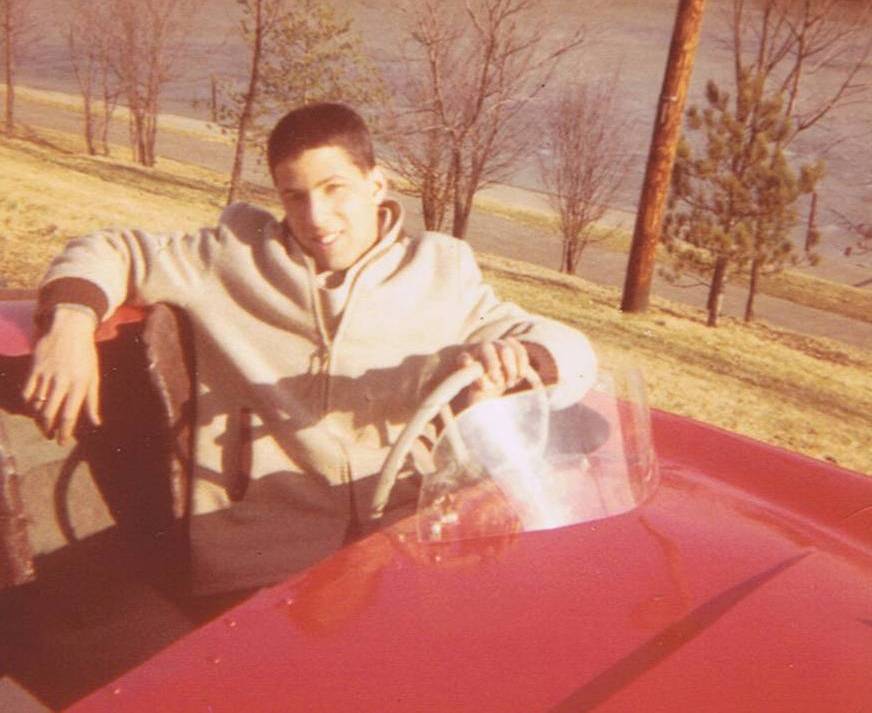
The author, 16 years old, in the Almquist bodied Crosley sports car, March 1958.
"Well, I don't really know as the rod doesn't have a speedometer, but I'm sure I was going at least forty, sir."
"You can cut that `sir' bit too. The official investigation is over. I'm impressed. Your car looks like it should be something you can be proud of, and from what you tell me and what Mrs. Fritz said, it must handle better than anything I've seen."
"Thank you. Do you want me to fire it up so you can hear it?" I offered, but still afraid to call him by his first name.
"Maybe some other time. I better get back on the air or the Sarge will come looking for me himself." I followed him to the cruiser and listened as he called in.
"Twenty-one, two-six."
"Two-six, Twenty-one. Were you able to catch the little whippersnapper?"
"Negative. Subject vehicle was in garage, and I was unable to determine who the driver was." Tony hung the mic back on the dash and said, "Look Chuck, you better take it easy here in the Village. Even a dog knows not to dump where he eats, if you know what I mean."
"You're right, Tony, I'm sorry. I'll try to keep my testing to the strip."
As the cruiser drove away, a wave of exhaustion swept over me. My emotions had been on a wild roller coaster, and I was too whipped to think about anything, even the flatness of the engine at high speed. I went inside only to be questioned by my mother.
Later that night, I went back into the garage and picked up the spare carburetor base, in order to take it to school on Monday. I planned to bore it out in Metal Shop to see if that would improve the top end.
Post Script: I did bore the venturi out on the Carter carburetor and after increasing the jet size, the top end was significantly improved. Because I was too young to race SCCA, my only racing was done on a drag strip where I took trophy in H Modified Sports Car many times. In 1959 the oil pump failed causing a burned rod bearing and I tired of putting money into it. I then sold it to a used car lot specializing in sports cars. The last I heard, mid-60s, my Almquist bodied Crosley was in North Carolina racing in SCCA events.
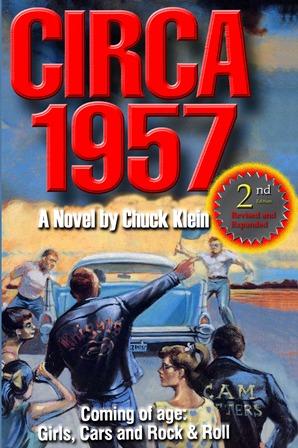
Cover to 2nd Edition, 2012
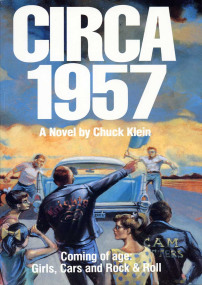
Cover to 1st Edition, 1990
Chuck Klein is the author of Circa 1957 and The Way it Was, Nostalgic Tales of Hot Rods and Romance. Details about him and his books: www.chuckklein.com